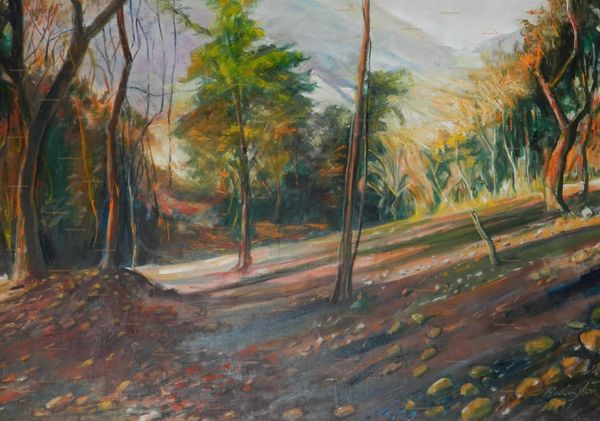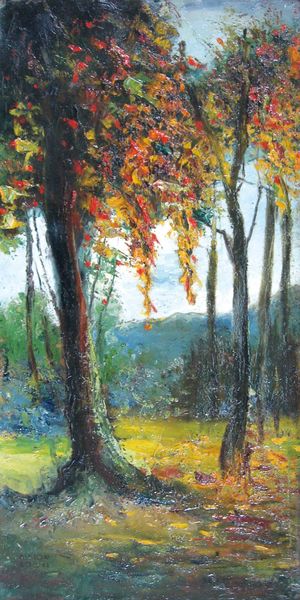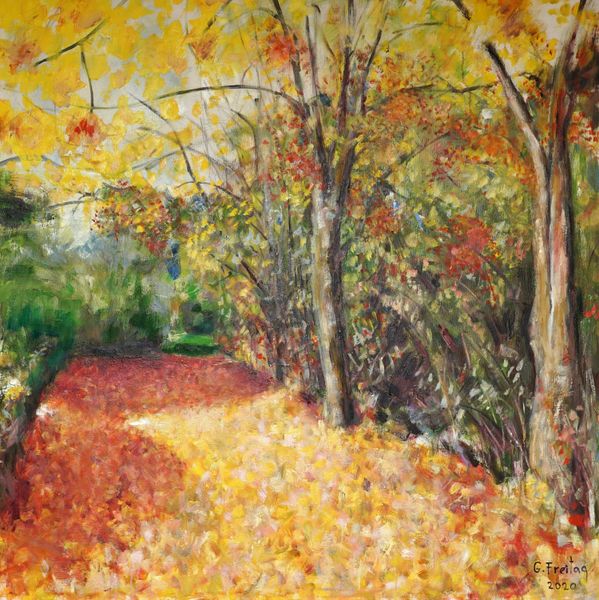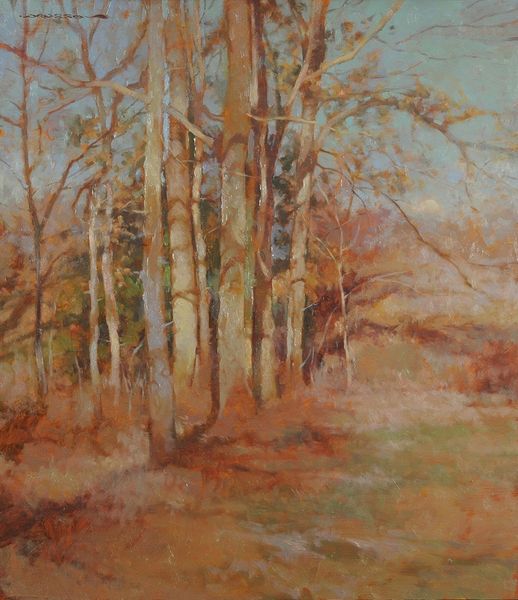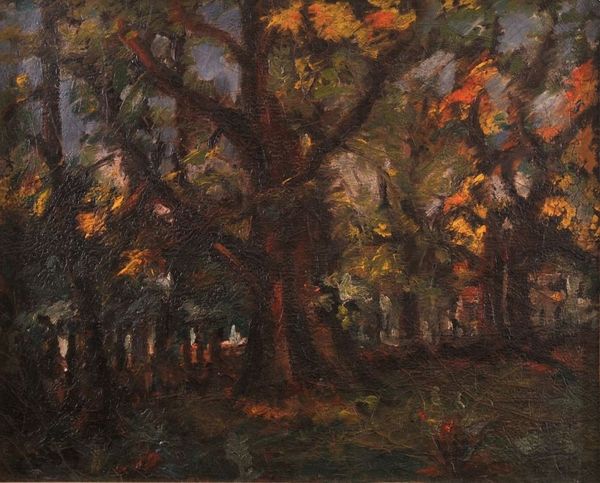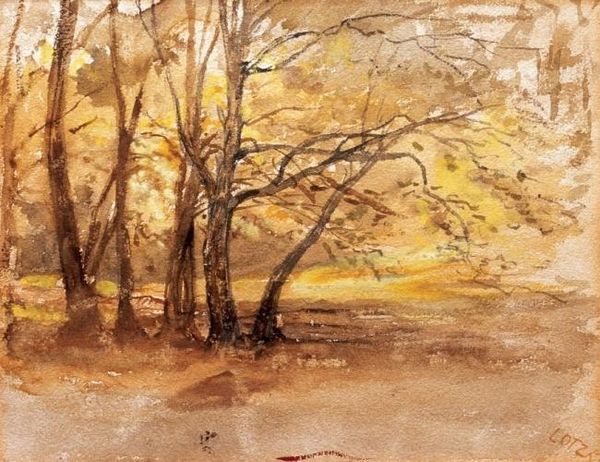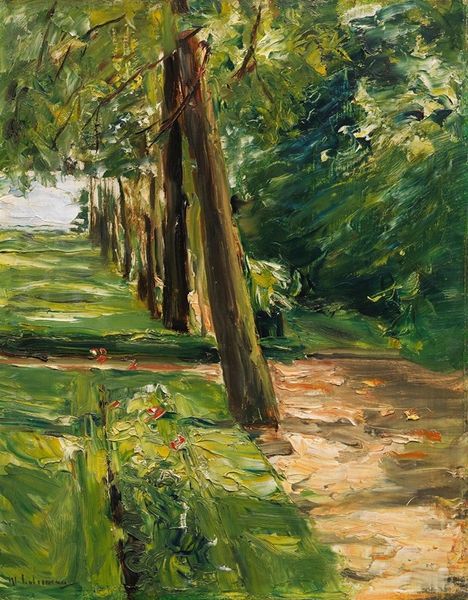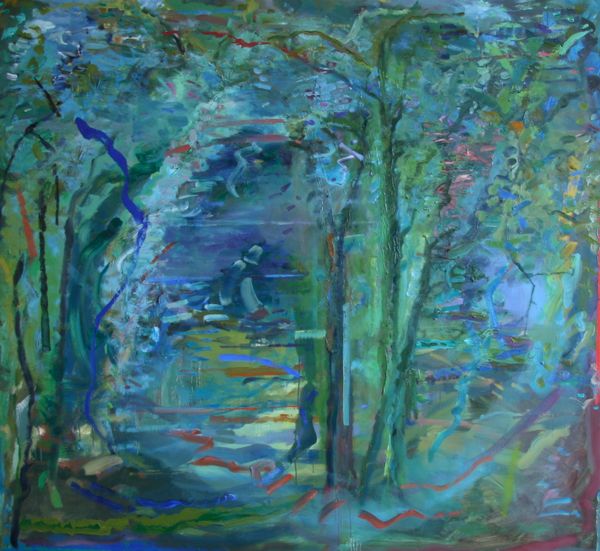
plein-air, oil-paint
#
tree
#
impressionism
#
impressionist painting style
#
plein-air
#
oil-paint
#
landscape
#
impressionist landscape
#
oil painting
#
forest
#
naturalistic tone
#
nature
#
natural environment
Copyright: Barrington Watson,Fair Use
Editor: Barrington Watson's "Orange Park Landscape," presumably rendered en plein-air in oil paint, feels so peaceful. The light dappling through the trees creates such a calm mood. What do you see in this piece, from your perspective? Curator: What strikes me is the title, "Orange Park Landscape," and its possible relationship to the actual location. It prompts consideration of Jamaican national identity in a post-colonial context. Watson was invested in representing Jamaica through its people and landscapes, wasn’t he? Editor: Definitely. He was interested in depicting a very specific, localized identity. How does that play out here? Curator: The naturalism, the almost academic handling of light, reminds us of European landscape painting, but transposed to a Jamaican setting. There’s a dialogue happening, isn’t there, between imported artistic traditions and the assertion of a distinct national vision? Editor: So it’s almost like Watson is claiming the landscape – culturally – through paint? Curator: Exactly. And think about the viewers for whom this painting was intended. Were they Jamaican, international, or both? And how would that shape the reception of this landscape? Did this portrayal align with or challenge existing social norms and the place of different social groups in the natural landscape? Editor: That's something I hadn't fully considered - how access to and depictions of nature also relate to power structures. I’m starting to see how this seemingly peaceful landscape can be read as a politically charged work, and this new knowledge brings an extra layer to it. Curator: Precisely! The most powerful landscapes often are. Art provides us with an arena to consider what our cultural expectations for art entail and where, when, and why these expectations have developed in a certain way.
Comments
No comments
Be the first to comment and join the conversation on the ultimate creative platform.
